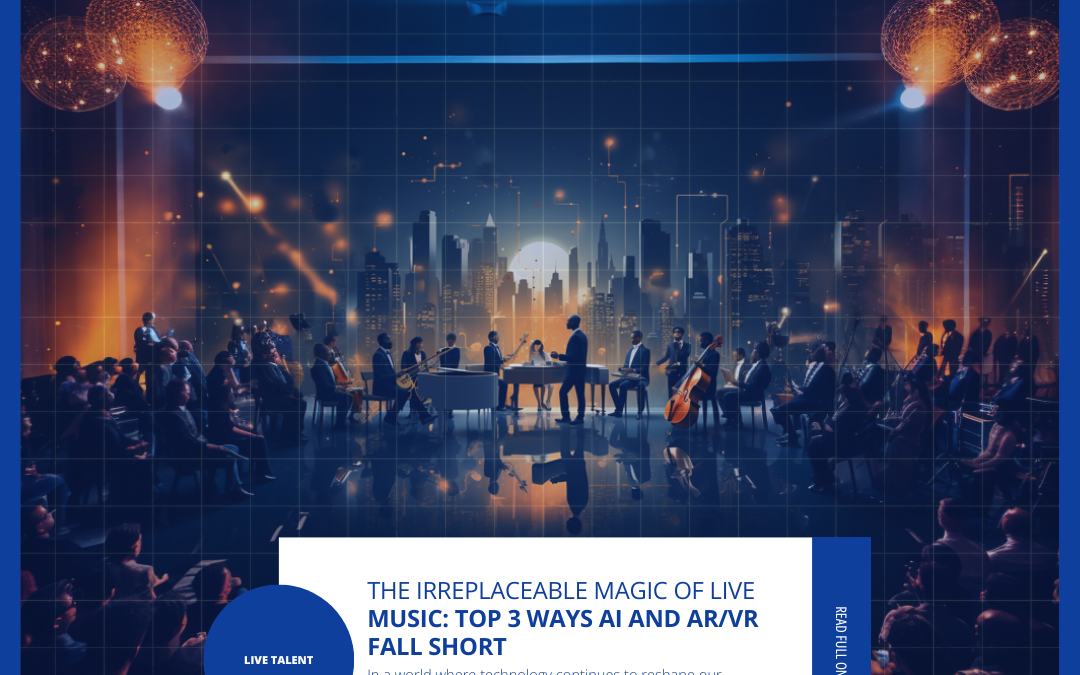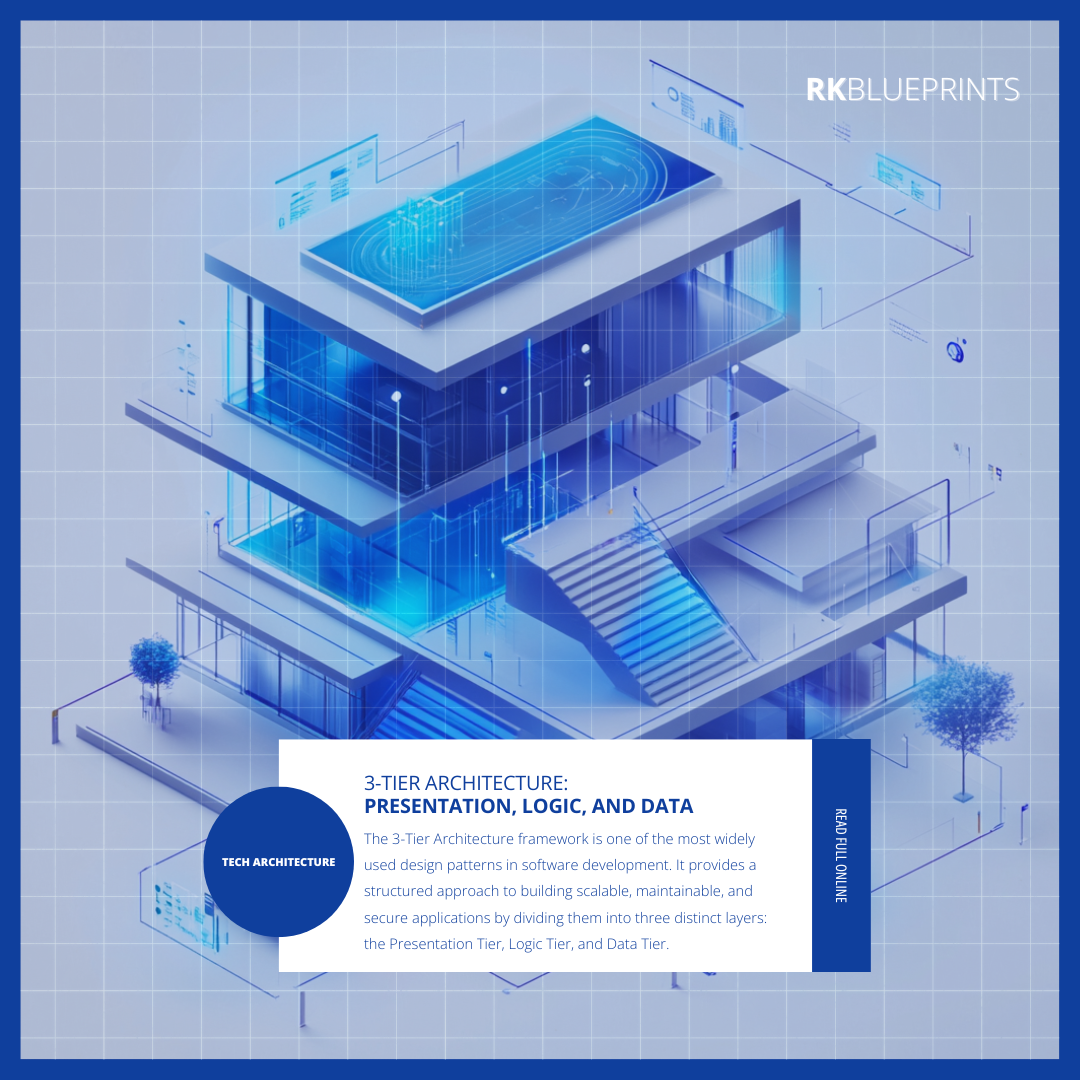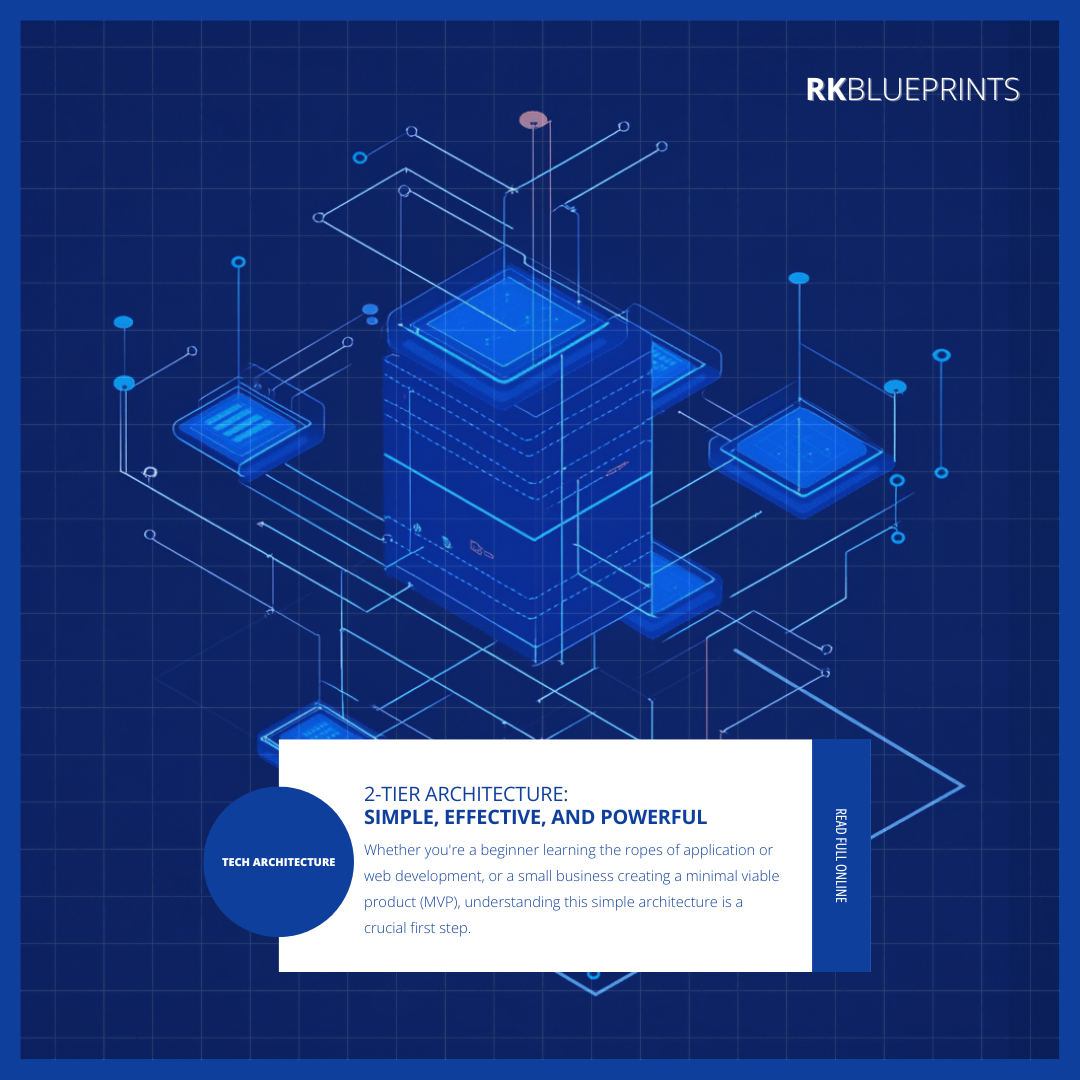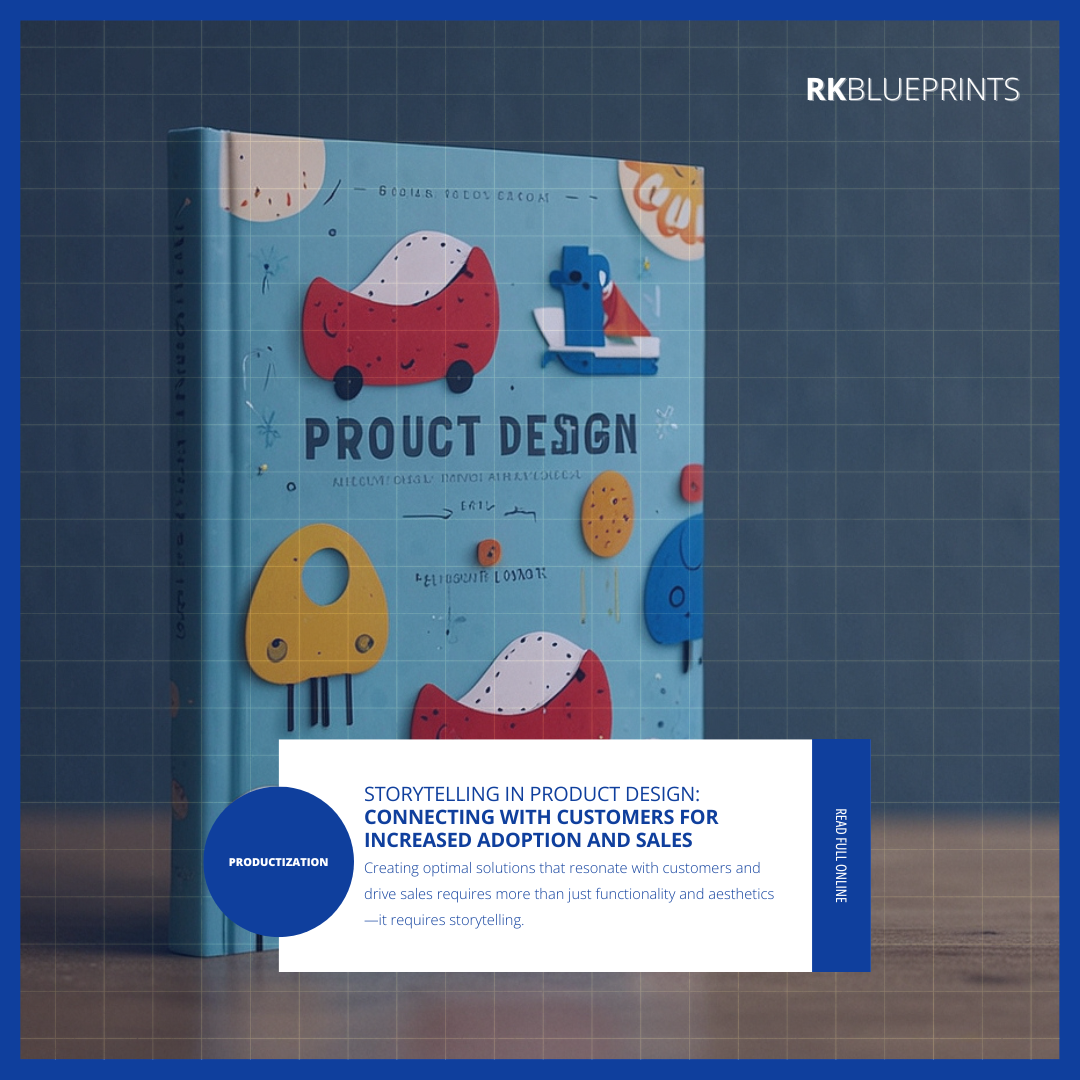In a world where technology continues to reshape our experiences, music performed by live talent stands as a timeless treasure – extending raw beauty to audiences worldwide. While AI (Artificial Intelligence) and AR/VR (Augmented and Virtual Reality) have made remarkable strides, there are compelling reasons why they can never fully replace the value-add that live music brings to almost any experience — in this piece, we’ll delve into the top 3 reasons with real-world examples.
1. Emotional connection: the soul of live music
AI and AR/VR may simulate sound and visuals, but they struggle to replicate the emotional depth that live music delivers.
Live music possesses a unique ability to create profound emotional connections that technology struggles to emulate. AI and AR/VR can replicate sounds and visuals with remarkable precision, but they often lack the soul-stirring authenticity that defines live performances. Consider attending a live concert by your favorite artist; as they stand before you, pouring their heart into each note, you’re not merely a passive spectator but an active participant in a shared emotional journey. The sweat, the tears, the rawness of the experience form a visceral connection that transcends the digital realm. It’s the quiver in a singer’s voice, the imperceptible hesitations, and the spontaneous interactions with the audience that make live music an irreplaceable treasure.
The emotional resonance of live music extends beyond individual performances; it weaves into the cultural fabric of communities and societies. Think of iconic music festivals, where people from diverse backgrounds gather to celebrate a shared love for music. Here, the music becomes a conduit for unity, fostering connections that transcend borders, languages, and differences. These emotional bonds are difficult for technology to replicate because they are rooted in the moment, unscripted, and inherently human aspects of live music. In the world of AI and AR/VR, where experiences are often meticulously curated and controlled, the genuine emotional connection forged through live music remains unparalleled.
Ex: Imagine attending a live acoustic performance by your favorite artist. As they strum their guitar and sing with raw emotion, you feel an inexplicable connection that transcends the digital realm. No AI or VR experience can recreate the authenticity and shared vulnerability that live music fosters.
Live music has an unparalleled ability to evoke emotions, create memories, and forge connections. Whether it’s the energy of a rock concert, the intimacy of a jazz club, or the communal spirit of a festival, the real-time, unfiltered human expression of musicians resonates deeply with audiences.
2. Unpredictable moments: the art of imperfection
AI and AR/VR excel in precision and predictability, but they struggle to embrace the beautiful imperfections of live performances.
Live music is an art form celebrated for its spontaneity and the beauty found in imperfection. It thrives on the unexpected, those delightful surprises that arise when musicians and audiences interact in real-time. Consider a jazz improvisation session, where each note is a spontaneous creation guided by the collective energy of the band and the audience. In these moments, time seems to stand still as musicians explore uncharted musical territories. The joy lies not only in witnessing these moments but in knowing that they are unique to that specific performance.
Contrast this with the predictability of AI and AR/VR experiences, where every outcome is pre-programmed and calculated. These technologies excel at precision but often struggle to replicate the sense of wonder and discovery that live music offers. A live music concert is a dynamic, living entity that responds to the energy of the crowd. It’s a space where the unexpected can happen at any moment, whether it’s an extended guitar solo, an impromptu collaboration between musicians, or a heartfelt interaction with the audience. These unpredictable moments infuse live music with a sense of adventure and authenticity that remains out of reach for artificial intelligence and virtual reality.
Ex: Consider a live rock band that decides to extend a guitar solo, feeding off the audience’s energy. In this spontaneous moment, the crowd’s cheers, the band’s improvisation, and the shared excitement create a unique experience. AI and VR, being programmed and calculated, cannot replicate these unpredictable, thrilling moments.
Live music is an art form where spontaneity thrives. Musicians have the opportunity to feed off the energy of the crowd, improvising, adjusting, and surprising listeners. These unpredictable moments are part of what makes live music so thrilling and unforgettable.
3. Shared experiences: the essence of connection
Live music isn’t just about the music; it’s about the shared experience, the sense of belonging to a community.
Beyond the music itself, live music events are about the shared experiences and the sense of belonging they foster. They bring together individuals from various walks of life, uniting them under the common banner of music appreciation. Imagine attending a classical music performance in a grand concert hall; as the orchestra plays, you’re surrounded by fellow concertgoers who share your reverence for the genre. In this communal setting, you become part of a collective experience, connecting with others through the shared language of music. AI and AR/VR may offer virtual social interactions, but they often lack the genuine sense of community that arises from physically sharing a space with others.
Live music events serve as social and cultural hubs, nurturing a sense of togetherness that transcends individual differences. At a music festival, you might find yourself dancing in a sea of strangers who quickly become friends as you bond over your favorite bands and songs. These events are microcosms of unity, where people from diverse backgrounds come together to celebrate a shared passion. This collective experience not only deepens the enjoyment of the music but also leaves lasting impressions and connections that extend far beyond the event itself. The sense of belonging, camaraderie, and shared joy that live music events offer are integral to their enduring appeal and are qualities that AI and AR/VR experiences struggle to replicate fully.
Ex: Picture yourself at a stadium concert. You’re surrounded by thousands of fans who share your love for the artist. As the music plays, you become part of a collective experience, singing along, dancing, and feeling a powerful sense of belonging. AI and AR/VR can’t replicate the sense of community and togetherness that defines live music events.
Live music events are more than just performances; they’re communal gatherings. They bring people together, forging bonds over a shared passion. Whether it’s a mosh pit at a rock concert or a serene moment at a classical recital, these shared experiences create lasting memories and connections.
While AI and AR/VR technologies have enriched our lives in numerous ways, they fall short in capturing the emotional depth, spontaneity, and communal connections that define the magic of live music. Live music is a testament to the beauty of imperfection, the power of shared experiences, and the profound emotional connections it forges between artists and audiences. In a world increasingly dominated by digital experiences, the allure of live music remains undiminished, reminding us of the inimitable magic that only live performances can deliver.
Live music transcends the boundaries of technology, touching our hearts, igniting our spirits, and reminding us of the irreplaceable magic that only live performances can provide. In a world increasingly driven by screens and algorithms, the enchantment of live music remains as vital and extraordinary as ever.







He Got 256,354 Free Views With AI…
Can you believe it?
People spend thousands of dollars to get that kind of result…
My friend Kundan just did it for free…
He only used his new app… AI ScreenSnap…
It’s the world’s first AI app that can generate videos with the power of Video-Exclusive AI Engine…
That can edit, record, and generate videos with just a few clicks… with zero experience…
Click here now and watch AI ScreenSnap in action https://ext-opp.com/AIScreenSnap
Thank you for sharing this insightful article! I found the information really useful and thought-provoking. Your writing style is engaging, and it made the topic much easier to understand. Looking forward to reading more of your posts!